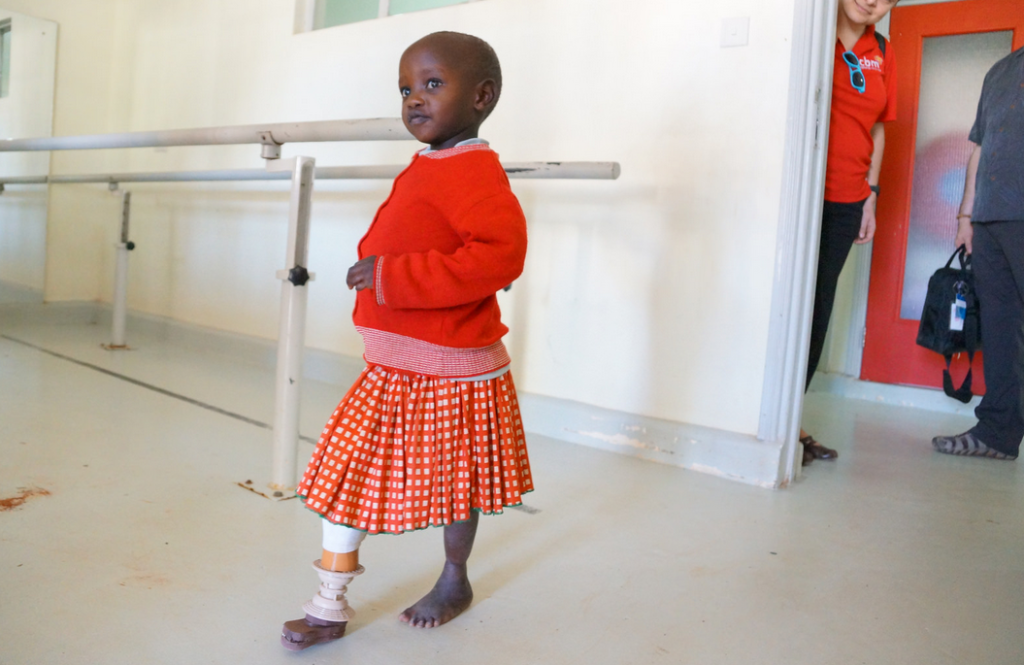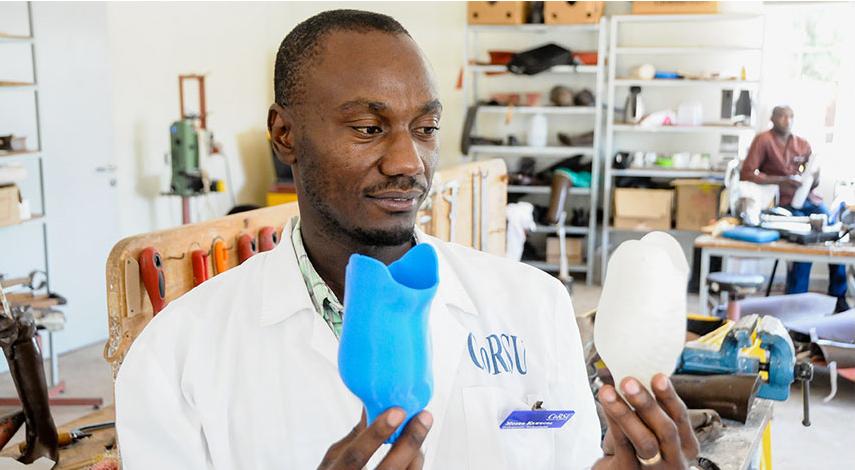 Many people in the world are fortunate enough to have little to no issues with their health. As you smack that alarm down in the morning, spring up and out, rushing to drive to work and engage in what sometimes seems like the overwhelming busy busy-ness of the day and week, it’s easy to take for granted how much more difficult your day, week, and life could be.
Many people in the world are fortunate enough to have little to no issues with their health. As you smack that alarm down in the morning, spring up and out, rushing to drive to work and engage in what sometimes seems like the overwhelming busy busy-ness of the day and week, it’s easy to take for granted how much more difficult your day, week, and life could be.
Imagine trying to perform all that you need to—without the arm you are accustomed to favoring for writing, eating, playing sports, and so much more—or without one of those legs responsible for your often constant locomotion. Now, take that one step further and imagine having such physical challenges and living in a developing nation, where life might already be somewhat—to incredibly—difficult on a continual basis.
Thanks to some substantial leaps and bounds in technology though, the world of prosthetics is in the process of being transformed, as are the lives of many in the process. I often think if 3D printing had only been responsible for making huge changes in the worlds of so many needing prosthetics, and it had stopped there, that in itself would have been an enormous contribution; as it is, the technology is making incredibly positive changes to nearly every sector, and it’s a fascinating evolution to be witnessing.
 Currently, according to Nia Technologies, it takes five days to make a prosthetic. While previously it may have been much longer and involved even more mess and inconvenience, that’s too long by today’s standards—much too long. In working to offer prosthetic limbs to young ones in Uganda, as well as other poverty-stricken countries, two Canadian tech firms, Nia Technologies and Vorum, are partnering to see that prosthetics can be made in a fraction of the time.
Currently, according to Nia Technologies, it takes five days to make a prosthetic. While previously it may have been much longer and involved even more mess and inconvenience, that’s too long by today’s standards—much too long. In working to offer prosthetic limbs to young ones in Uganda, as well as other poverty-stricken countries, two Canadian tech firms, Nia Technologies and Vorum, are partnering to see that prosthetics can be made in a fraction of the time.
Vorum offers digital solutions able to increase productivity for companies making prosthetic and orthotic devices—to the tune of 600%. This is due to their custom design and manufacturing technology which allows users to cut turnaround times, and improve experience and patient outcome. Nia Technologies is a not-for-profit company dedicated to improving the lives of those challenged in developing areas. To do so, they leverage new and effective technologies such as 3D PrintAbility, a technology created in collaboration with the University of Toronto, which they use to create custom prosthetics and orthotics through affordable scanning, design, and 3D printing.
The two companies together are now able to provide a ‘digital toolchain’ for cutting production to an amazing 1.5 days. This is thanks to a custom software program written by the two companies together, combined with affordable scanning and 3D printing equipment. The program is currently undergoing trials in developing countries—beginning with Uganda—where we previously reported on a program delivering 3D printed prosthetics thanks to the University of Toronto and the Christian Blind Mission of Canada, the parent company of Nia. The goal of the two companies is to ‘boost the output of overtaxed orthopedic technologists.’
Nia Technologies will be integrating 3D PrintAbility and Vorum’s Canfit 3D design software together, enhancing their digital toolchain, and allowing for even better productivity in an area where it’s estimated that 12 technologists serve over 90,000 disabled children in need of prosthetics and orthotics.
“The ingenuity of 3D PrintAbility lies in its integration of highly specialized design software with inexpensive commercial scanners and printers to produce better fitting devices more quickly than is possible with conventional methods,” says Matt Ratto, Nia Chief Science Officer and University of Toronto Professor. “Vorum’s generous contribution of Canfit to 3D PrintAbility means that Nia will be able to deliver proven, comprehensive, and easy-to-use tools to developing countries like Uganda sooner and more economically than originally planned.”
3D PrintAbility, in being able to cut production time to only 1.5 days means that children only need to stay in the hospital for a very short time.
“Roseline, a four-year-old Ugandan girl born without a right foot, was the first patient to receive a 3D PrintAbility socket in 2015,” observes Jerry Evans, Nia CEO. “With her 3D PrintAbility socket in place, Roseline was able to walk and run alongside other children for the first time in her life. Our goal is to help thousands more children like Roseline–and Nia’s partnership with Vorum, a market leader in fabrication technologies in the developed world, will help us get there sooner.”
Trials are scheduled to begin something during this sping at CoRSU Hospital in Uganda. They are planning to trial below-the-knee prosthetics as well as ankle-foot orthotics.
“Nia’s 3D PrintAbility solution will enable a substantial increase in the capacity of the very few trained orthopedic technologists in countries like Uganda to provide life-changing, high-quality artificial limbs to children in need,” states Carl Saunders, Vorum CEO. “We are thrilled to contribute to a social enterprise that will empower local providers to help thousands of additional children in the poorest countries.”
What do you think of the enormous efforts these teams are going to for kids in Uganda, and ultimately, further? Discuss in the Uganda 3D Printed Prosthetics & Orthotics forum over at 3DPB.com.
Subscribe to Our Email Newsletter
Stay up-to-date on all the latest news from the 3D printing industry and receive information and offers from third party vendors.
Print Services
Upload your 3D Models and get them printed quickly and efficiently.
You May Also Like
Bambu Lab Targets the Enterprise Market with New H2D Pro Printer
As we learned from our interview with Cedric Mallet, Bambu Lab had not considered the enterprise and manufacturing market when it launched its first 3D printer. Nonetheless, thousands of businesses...
3D Printing News Briefs, July 31, 2025: Falcon A1 Pro Launch, Kickstarter 3D Printer, & More
Today’s 3D Printing News Briefs is all about new products! We’ll tell you about some new components and machines related to additive, as well as a new 3D printer on...
3D Printing News Briefs, July 19, 2025: Topology Optimization, Bike Saddle, & More
In this weekend’s 3D Printing News Briefs, Farsoon Technologies has reached a milestone of 150 large-format metal 3D printing systems being sold globally. Snapmaker unveiled a new 3D printer, and...
UltiMaker Launches S6 3D Printer for Applications in Education, Defense, & Manufacturing
UltiMaker launched its professional S5 3D printer back in 2018, and since then has also released the S7 and, just a few months ago, the S8. Today, the company continues...































